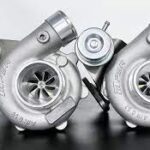Switching an electric guitar strings may not be the most glamorous activity, but it is one of the most important skills that any guitarist must learn. New strings will make your instrument sound and play better. Player or beginner, learning how to replace your strings will keep your guitar in prime condition and will enhance your overall playing experience.
Antique strings may also become dull and unresponsive with age, and this is why frequent changes are essential. Not only does this daily care keep your tone crisp, but you also have the opportunity to be yourself as a performer. And be prepared to learn how to string up like a pro? We will take a step-by-step look at how to replace the strings on that electric guitar!
Necessary Tools for Changing Electric Guitar Strings
Assemble your tools before getting into the string-changing process. The job is made easier when all is there.
First, you’ll need a tuner. This gadget makes your guitar sound exactly right after you have strung it. A clip-on/pedal tuner is good to do this.
Next, grab a string winder. This convenient device has made it much faster to wind, and it saves your fingers the trouble of straining.
Don’t forget wire cutters! They are necessary in trimming unnecessary length of the strings once installed.
A soft cloth is also good to clean your fretboard during the changeover. Maintaining the wood clean improves the ability to play and helps prevent the accumulation of grime.
It will help to have some fretboard conditioner on hand in case you need a thorough cleaning. It keeps that fresh feel on the surface of your guitar and extends its life.
Loosening and Removing Old Strings
Start by grabbing your tuner. To prevent the sudden snap, you need to relax the tension on each of the strings. Find the tuning-pegs and turn them to the right, to the counter of the clock, so that each of the strings will be at rest.
After they are relieved of tension, they will be easier to take away. For this work you will require wire cutters or pliers; cut the strings near the bridge and at tuning posts.
The tuners may have some pieces remaining after cutting; unwind these very slowly. This step needs to be taken at a slow pace–if you are too fast, you may become frustrated in the future.
After taking away all the strings, check the hardware of your guitar and make sure it is in proper shape before proceeding. Cleaning now will save you the inconvenience in future when you have the new electric guitar strings to change!
Cleaning the Fretboard and Guitar Body
Since the old strings are gone, you need to take some care of your electric guitar. Over time, the fretboard tends to get dirty, oily, and greasy. Not only does a clean fretboard look good, but also improves playability.
This should be done with a soft cloth or a special fretboard cleaner. When it comes to stubborn accumulation, you may want to use a guitar-specific cleaner. Use only in a small amount and do not saturate the wood.
Don’t forget about the body of your guitar! Clean its surface using a microfiber cloth to clean off dust and fingerprints. To clean more carefully, it is better to use a suitable polish that will not harm the finish.
This is a necessary measure in preserving aesthetics and functionality. You will find a clean instrument sounding better, and feel smoother under the fingers, as you prepare to string up afresh.
Prepping New Strings for Installation
Prep them first before beginning to install the new electric guitar strings. This will make them easier to do business with and sound good.
To begin with, unwind the new strings very slowly. There should be no sharp pulls that can lead to changes in shape through kinking or bending. Arrange them in descending order of high E to low E; it will make the installation process fast.
You should then stretch each of the strings between your fingers. This aids in eliminating slack and eliminates tuning problems in the future. Note: Do not tug too hard, as you only want the right amount of tension so that it can maintain its shape without being broken.
When you are working with coated strings, find out whether they must be handled or cut differently. Brands might contain recommendations that can be maximized to perform and last.
Now that you are all ready, you can proceed to the next phase of your process of changing strings!
Stringing Up Your Electric Guitar with Proper Technique
Now that you have all the preparation done, it is time to put your electric guitar together. Working with the first string to install. The majority of players begin with the low E string though you can always use any one that fits your style.
Take the new string and then put one end of the string through the bridge of your guitar. Ensure that it is safe then proceed. When threading the string through the tuning pegs in the headstock, pull the string taught. Allow a little free on winding–say a few inches will do.
In winding, be sure to turn in a steady pattern so that every wrap fits snugly against the other on the peg. Not only does this appear professional, but this also contributes to the stability of tuning in time. When you have turned a sufficient number of good ones–three or four turns, of course–you can cut off any surplus strand of the string.
Once this is done with all six strings, it is important to stretch them by tugging them up and down the string length after they have been strapped and tightened to play an initial tune. This will enable them to get into position a lot faster and alleviate the frustrating pitch changes throughout practice.
After all the strings are securely fixed and tuned, give your guitar a last tune-up with a good tuner, and then start playing! Hear those clear notes of new electric guitar strings as you immerse yourself in your favorite riffs and melodies!
















